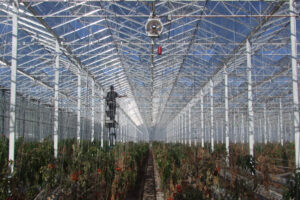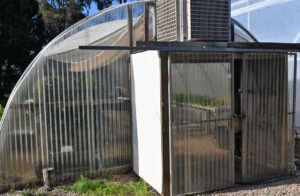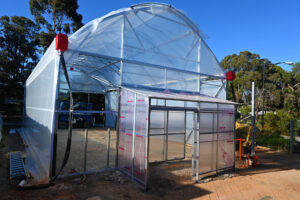
Educational greenhouses offer a positive step for a skilled industry
By Daniel Austin
Vocational Education and Training (VET) is seen in all sorts of shapes and forms across Australia, from traditional Technical and Further Education (TAFE) colleges to private Registered Training Organisations (RTOs) and a myriad of online training options. So why is it that today, quality horticultural staff are so hard to come by?
There are numerous contributing factors to address when answering this question. Firstly, many skilled and well-trained graduates choose to be their own bosses and start horticultural businesses themselves rather than look to work for larger businesses. However, there are also graduates that go out into the workforce underprepared for what the industry entails and requires. Often, online courses and some of those offered by private RTOs do not allow enough practical ‘hands-on’ elements to allow students to gain adequate experience in topics. Furthermore, TAFE colleges are often subject to funding shortages and, at times, fall behind industry standards in resources and equipment. Both scenarios can limit the employability of affected graduates.

There are several niche industries under the horticulture umbrella that are suffering as a result of these issues, including the sports turf industry and production nurseries. The materials and equipment used to maintain quality sports turf throughout Australia’s golf courses and sports fields can quickly add up to costs in the millions and is a limiting factor for some sports turf management training providers. While for the nursery industry, it is greenhouse infrastructure that incurs the most significant costs. Thankfully, for the latter, greenhouse installations are a one-time or very infrequent cost and the benefits are starting to be recognised with two recent projects poised to produce positive results.
This year, Goulburn Ovens TAFE (GOTAFE) Shepparton campus opened the doors to a smaller $217,700 greenhouse for training. The 400m2 facility features both hydroponic and conventional nursery systems. The facility’s environmental controls can be monitored and adjusted on a smartphone and include gas heating, solar and thermal screens, and a fogging system. The installation will accommodate approximately 40 students each year and help to meet demand from the local horticulture sector in areas not being met by the current training market.
One hindrance to quality training at older RTOs colleges is often posed by their age, with many established as far back as the 1970s or more, having had little done to update or modernise facilities. This was the case for TAFESA’s Urrbrae campus. Established in the early 90s on land shared with the Urrbrae Agricultural High School and bordered by an arboretum and agriculture-focused university campus, the location is one of a kind and has benefitted generations of students. While the site is still considered South Australia’s peak location for training in horticulture and the environment, time had taken its toll on some key horticultural infrastructure, in particular, the campus’s propagation facility.
In an encouraging development, construction works are now underway on a propagation facility at Urrbrae which will be similar in size and features to that seen at the Shepperton Campus. Set to open for training for students studying in the first semester of 2023, the facility will ensure the campus maintains its reputation as the state’s hub for horticultural training.

While these projects have been commissioned based on demand and will have relatively low ongoing maintenance costs, there is also a very real risk associated with technology heavy infrastructure that is expensive to run, and in an education setting, does not yield the income of a commercial greenhouse. The construction of the National Precision Growing Centre at Chisolm TAFE, Cranbourne is an example. Established in 2010, the $1,200,000 facility was the only one of its kind in the country. Spanning 1,500 square metres of greenhouse space, the project was world class and garnered international support from a variety of renowned glasshouse and ag-tech companies. However, the maintaining operation of the facility during the pressures of the COVID19 pandemic became unfeasible, and at the time of writing this article, the resource has unfortunately ceased functioning and is out of use. However, on a brighter note, as the constraints of the pandemic lift there are signs that the invaluable training facility will be recommissioned in the near future.
As the national horticultural skills shortage continues to increase, training that demonstrates industry-standard best practice will become more and more valuable, particularly as aging trainers continue to retire, taking with them decades of accumulated skills and knowledge. These greenhouses will be key facilities in producing horticultural graduates with fundamental knowledge of horticultural best practices, and though they aren’t the solution to the skills shortage alone, they are a positive step in the right direction.
Dan Austin
IPPS Member, Author
Lecturer, TAFE South Australia
M: 049 122 8591
E: daniel.austin@outlook.com
FB: BeyondGreenAustralia
W: ipps.org
Main photo: A new propagation facility under construction at TAFESAs Urrbrae Campus
